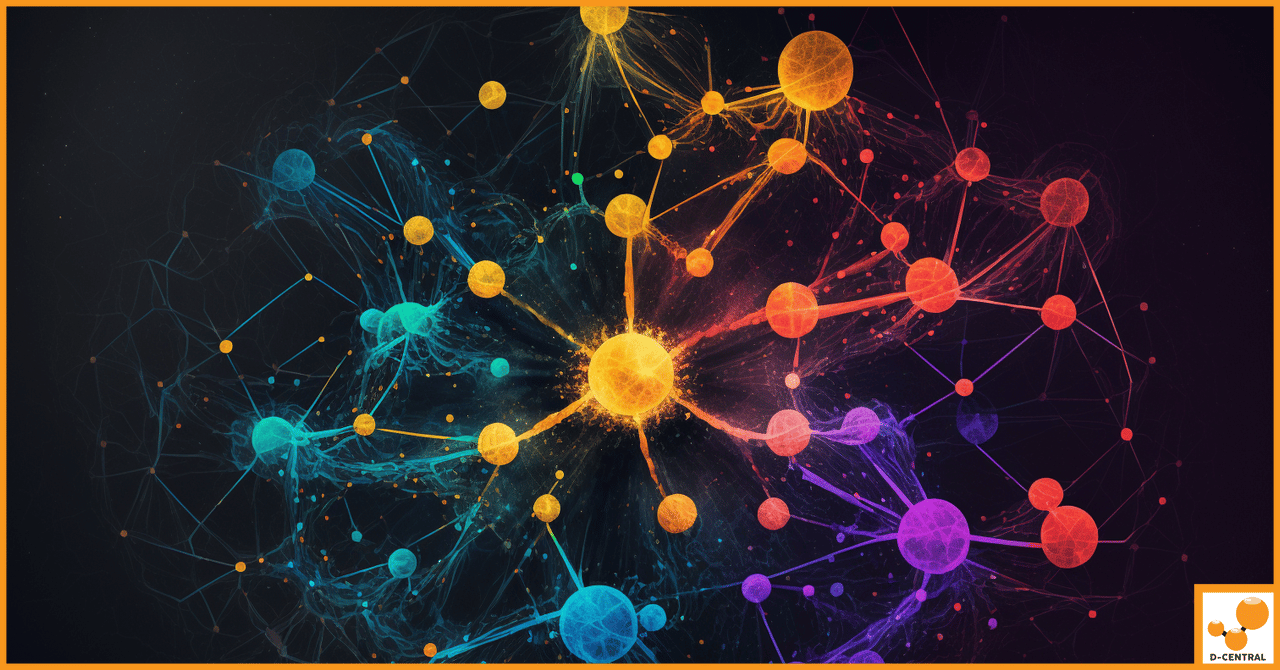
Comparing Energy Costs: Home Bitcoin Mining vs. Traditional Heating Methods
As energy costs continue to rise, homeowners are increasingly seeking efficient and cost-effective methods for heating their residences. In this
4479 Desserte Nord Autoroute 440, Laval, QC H7P 6E2

Bitcoin, the pioneering cryptocurrency, has revolutionized the financial landscape with its decentralized nature, challenging traditional centralized banking systems. Unlike conventional currencies controlled by central authorities, Bitcoin operates on a decentralized network, underpinned by a technology known as blockchain. This groundbreaking approach ensures that no single entity has control over the currency, promoting a level of transparency, security, and accessibility unprecedented in the financial world.
At the heart of Bitcoin’s decentralized architecture are nodes, the unsung heroes of the cryptocurrency’s network. These nodes are essentially computers connected to the Bitcoin network, each playing a crucial role in validating and relaying transactions, maintaining the integrity and trustworthiness of the entire system. They are the custodians of the network’s consensus rules, ensuring that every transaction adheres to the established protocols and that the blockchain remains an immutable ledger of all Bitcoin transactions.
This article delves into the nuanced world of Bitcoin nodes, focusing on two pivotal types: archival and pruned nodes. Archival nodes store the entire history of the Bitcoin blockchain, serving as a comprehensive record of every transaction ever made. Pruned nodes, on the other hand, maintain a more streamlined version of the blockchain, optimizing storage requirements without compromising the network’s integrity. Together, these nodes form the backbone of Bitcoin’s decentralized network, each contributing uniquely to its robustness and efficiency. Our exploration will shed light on how archival and pruned nodes not only uphold the decentralized ethos of Bitcoin but also ensure its resilience and adaptability in the ever-evolving landscape of digital currencies.
In the realm of Bitcoin, nodes are fundamental components that ensure the functionality, security, and decentralization of the network. A Bitcoin node is a computer that runs the Bitcoin software, enabling it to fully participate in the Bitcoin network by validating transactions and blocks according to the consensus rules. These nodes are interconnected, forming a vast, global peer-to-peer network that is the lifeblood of Bitcoin’s decentralized architecture.
At its core, Bitcoin operates on a peer-to-peer (P2P) network, a decentralized model where each participant, or node, directly interacts with others without the need for a central server. This design allows for a distributed ledger, the blockchain, which is maintained collectively by the network. Every node has the potential to contribute to the network’s decision-making process, a feature that is critical for achieving consensus.
Consensus in Bitcoin is achieved through a process known as Proof of Work (PoW), where miners compete to solve complex cryptographic puzzles. The first miner to solve the puzzle gets to add a new block of transactions to the blockchain and is rewarded with newly minted bitcoins and transaction fees. However, it’s the nodes that validate these blocks and transactions against the Bitcoin protocol’s rules, ensuring that only legitimate transactions are confirmed and added to the blockchain.
Nodes are the guardians of Bitcoin’s integrity and security. By independently validating transactions and blocks, nodes ensure that no invalid data is accepted into the blockchain. This validation process includes checking transaction signatures, ensuring that no double-spending occurs, and confirming that each block adheres to the network’s rules, such as size limits and the correct issuance of rewards.
Moreover, nodes contribute to the network’s resilience against attacks. The decentralized nature of the network, with its nodes spread across the globe, makes it incredibly difficult for any malicious actor to compromise the system. Even if some nodes were to be taken down or manipulated, the rest of the network would continue to operate, maintaining the blockchain’s integrity.
In essence, nodes are the backbone of Bitcoin’s decentralization, providing the necessary infrastructure for a secure, transparent, and resilient financial system. Their role in validating and relaying transactions ensures that Bitcoin remains a trustless network, where transactions can be verified without the need for a central authority. This decentralized model not only enhances security but also promotes a level of financial freedom and inclusivity that traditional financial systems have struggled to provide.
Full nodes represent the most robust type of nodes within the Bitcoin network. They download, validate, and store the entire history of Bitcoin transactions, encapsulated in the blockchain. By running a full node, participants possess the autonomy to independently verify every transaction and block against Bitcoin’s consensus rules. This includes checking the validity of transaction signatures, ensuring no double-spending occurs, and confirming that each block adheres to the network’s size and reward issuance rules.
The responsibilities of full nodes extend beyond mere validation. They also relay verified transactions and blocks to other nodes, facilitating the widespread distribution of blockchain data. This continuous process ensures that the network remains synchronized and up-to-date, preserving the blockchain’s integrity and trustlessness.
Archival nodes, a subset of full nodes, serve as the custodians of Bitcoin’s complete transactional history. They store the entire blockchain without pruning any data, ensuring that the full ledger, from the genesis block to the most recent, is preserved intact. This comprehensive record-keeping is vital for several reasons:
Archival nodes, by maintaining a complete copy of the blockchain, embody the principle of decentralization, ensuring that the network’s history is not controlled or monopolized by any single entity.
Pruned nodes offer a more storage-efficient alternative to archival nodes while still upholding the network’s integrity. These nodes download the entire blockchain but only retain the most recent segments, discarding older data that is no longer necessary for validating new transactions. This pruning process is carefully designed to ensure that pruned nodes can still fully validate transactions and blocks, thanks to the cryptographic linking of blockchain data.
The benefits of pruned nodes include:
Pruned nodes strike a balance between maintaining the network’s integrity and making node operation more accessible and feasible for a broader audience. They play a crucial role in ensuring that Bitcoin’s decentralized network remains inclusive, resilient, and scalable.
Archival nodes are the stalwarts of the Bitcoin network, dedicated to preserving the complete and unaltered history of Bitcoin transactions. These nodes download and maintain every block and transaction ever executed within the network, from Bitcoin’s inception to the present day. The operation of archival nodes involves continuously receiving, validating, and storing new transactions and blocks, while also making this wealth of historical data available to other nodes.
The process begins with the archival node verifying the authenticity and adherence to consensus rules of each incoming transaction and block. This includes checking transaction signatures, ensuring no coins are double-spent, and validating that each block correctly references its predecessor, thereby maintaining the blockchain’s integrity. Once validated, these transactions and blocks are added to the archival node’s local copy of the blockchain, which encompasses the entire transaction history of Bitcoin.
Archival nodes play a pivotal role in bolstering the Bitcoin network’s redundancy and security. Their comprehensive record of the blockchain serves as a fail-safe, ensuring that the network can recover from data losses or corruptions. This redundancy is crucial for a decentralized system like Bitcoin, where no central authority exists to maintain the official copy of the ledger.
Moreover, the widespread distribution of archival nodes around the globe enhances the network’s security. It makes it exceedingly difficult for malicious actors to alter the blockchain’s history or impose censorship. The presence of numerous archival nodes ensures that any attempt to rewrite the blockchain would need to overcome the consensus of a vast, distributed network of independently verifying nodes, a feat that is practically impossible given the current scale and distribution of the Bitcoin network.
While the benefits of archival nodes to the Bitcoin network are immense, operating such a node comes with its set of challenges:
Despite these challenges, the operation of archival nodes is essential for the preservation and integrity of the Bitcoin network. Their role as the guardians of Bitcoin’s history underscores the decentralized and trustless nature of the network, ensuring its resilience against attacks and its continuity for future generations.
Pruned nodes represent a pragmatic approach to participating in the Bitcoin network without the extensive storage requirements of archival nodes. These nodes operate by downloading the entire blockchain initially to validate the full history of transactions. However, unlike archival nodes, pruned nodes do not retain the entire blockchain. Instead, they discard older data beyond a certain threshold, keeping only the most recent blocks. This pruning process is carefully designed to ensure that these nodes can still independently validate transactions and blocks, leveraging the cryptographic integrity of the blockchain.
The operation of pruned nodes involves a continuous cycle of downloading, validating, and discarding data. As new blocks are added to the blockchain, pruned nodes assess and prune older blocks, maintaining a “sliding window” of blockchain data that meets the storage capacity set by the node operator. Despite this pruning, these nodes maintain the essential information required to verify the validity of new transactions, ensuring their adherence to Bitcoin’s consensus rules.
Pruned nodes strike a delicate balance between operational efficiency and full participation in the Bitcoin network. By reducing the storage burden, pruned nodes make it feasible for individuals and organizations with limited resources to run a full node. This democratization of node operation is crucial for maintaining the decentralized ethos of Bitcoin, ensuring that the network’s validation process is not centralized among entities with significant storage capacities.
Furthermore, pruned nodes contribute to the network’s health by validating transactions and blocks, relaying verified transactions, and serving as fully participating members of the network. Their operation ensures that the network remains robust and secure, with a diverse set of validators spread across the globe. This diversity enhances the network’s resistance to attacks and ensures a more equitable distribution of the responsibility for maintaining the blockchain’s integrity.
Pruned nodes play a pivotal role in enhancing the scalability and diversity of the Bitcoin network. By lowering the barriers to entry for running a full node, pruned nodes encourage a broader range of participants to contribute to the network’s validation process. This increased participation not only strengthens the network’s decentralization but also introduces a wider array of perspectives and investments in the network’s well-being.
Moreover, the efficiency of pruned nodes addresses one of the critical challenges facing the Bitcoin network: scalability. As the blockchain grows, the demand for storage and bandwidth increases, potentially limiting the network’s ability to accommodate an expanding user base. Pruned nodes mitigate this issue by ensuring that full node operation remains accessible and sustainable, even as the blockchain expands.
In summary, pruned nodes embody a practical solution to the challenges of blockchain scalability and accessibility. Their operation ensures that the Bitcoin network remains inclusive, secure, and resilient, fostering a diverse ecosystem of participants committed to upholding the decentralized principles of Bitcoin.
The Bitcoin network relies on a diverse ecosystem of nodes, each contributing uniquely to its strength and resilience. Archival and pruned nodes, while serving the common goal of maintaining the network’s integrity, differ significantly in their operation, requirements, and contributions. Understanding these differences is crucial for appreciating the complementary roles they play in the Bitcoin ecosystem.
The coexistence of archival and pruned nodes within the Bitcoin network exemplifies the ecosystem’s adaptability and robustness. Archival nodes act as the guardians of Bitcoin’s history, ensuring that the blockchain’s complete record is preserved and accessible for validation, research, and auditing purposes. This comprehensive historical record is crucial for maintaining transparency and trust in the network.
On the other hand, pruned nodes ensure that the network remains inclusive and scalable. By lowering the barriers to entry for running a full node, pruned nodes encourage wider participation in the network’s maintenance. This broad participation is vital for upholding the decentralized nature of Bitcoin, ensuring that no single entity can control the network.
Together, archival and pruned nodes create a balanced ecosystem where the network’s history is preserved, and its future growth is supported. This balance ensures that Bitcoin remains secure, transparent, and true to its decentralized principles, capable of adapting to the evolving demands of its global user base.
The decentralization of Bitcoin is a fundamental principle that distinguishes it from traditional financial systems, ensuring that no single entity can control or manipulate the network. This decentralization is upheld by the diverse ecosystem of nodes, with archival and pruned nodes playing pivotal roles. Understanding how these nodes contribute to decentralization is crucial for appreciating the resilience and censorship resistance of the Bitcoin network.
Node diversity is a cornerstone of a resilient and censorship-resistant Bitcoin network. A homogenous network, where nodes are concentrated among a few operators or regions, is vulnerable to targeted attacks, regulatory pressures, and censorship. In contrast, a diverse network, characterized by a wide distribution of both archival and pruned nodes operated by various entities worldwide, is inherently more robust.
In summary, the combined contributions of archival and pruned nodes to Bitcoin’s decentralization are fundamental to the network’s ethos. Their roles ensure that Bitcoin remains a secure, transparent, and equitable system, resistant to censorship and manipulation. The diversity of nodes, in terms of both their function and geographic distribution, is key to maintaining the resilience and integrity of the Bitcoin network, embodying the principles of decentralization that underpin the cryptocurrency’s foundation.
Operating a Bitcoin node is a tangible way to contribute to the decentralization and robustness of the Bitcoin network. Whether you choose to run an archival node, with its complete historical ledger, or a pruned node, with its efficient use of storage, the process empowers you with greater privacy, security, and a voice in the network’s consensus. Here’s a guide to setting up both types of nodes, along with the benefits of running your own node.
-prune=<size> option, where <size> is the maximum storage space in MB you’re allocating for the blockchain.Running your own Bitcoin node, whether archival or pruned, is a commitment to the network’s health and decentralization. It empowers you with greater control over your transactions, enhances your security, and allows you to contribute directly to the robustness of the Bitcoin ecosystem.
D-Central Technologies stands at the forefront of empowering the Bitcoin ecosystem, championing the cause of decentralization through its innovative solutions and unwavering support for node operators and miners. With a deep understanding of the challenges and opportunities within the Bitcoin network, D-Central is dedicated to enhancing the network’s resilience, inclusivity, and efficiency.
D-Central Technologies recognizes the pivotal role of node operators in maintaining the integrity and decentralization of the Bitcoin network. To this end, D-Central offers comprehensive support services tailored to the needs of both archival and pruned node operators. This support encompasses technical assistance, educational resources, and hardware solutions designed to optimize node performance and reliability.
For miners, D-Central provides a suite of services aimed at enhancing mining efficiency and profitability. Understanding the critical role miners play in securing the network and processing transactions, D-Central offers mining hardware procurement, hosting solutions, and maintenance services. These services are designed to lower the barriers to entry for new miners and enhance the operational efficiency of existing mining operations.
D-Central Technologies is at the cutting edge of developing innovative solutions that support the operation of both archival and pruned nodes. Among these innovations are custom hardware modifications tailored to the specific requirements of running a Bitcoin node. These modifications address common challenges such as storage limitations, bandwidth constraints, and energy efficiency, making it easier for individuals to participate in the network as node operators.
One of D-Central’s standout innovations is the Bitcoin Space Heater, a creative solution that repurposes the heat generated by mining hardware for home heating. This not only provides a practical use for the byproduct of mining but also enhances the sustainability and cost-effectiveness of operating a node and mining setup.
D-Central is pioneering incoming solutions aimed at deploying small full archival nodes combined with mining capabilities in home environments. This initiative seeks to revive the original vision of Bitcoin, where individuals could contribute to the network’s security and consensus from the comfort of their homes. By integrating mining and full node capabilities into a single, user-friendly solution, D-Central is making it possible for more people to directly participate in and benefit from the Bitcoin network.
D-Central is committed to supporting “pleb miners” – everyday individuals interested in contributing to the Bitcoin network through mining. Recognizing the challenges faced by home users, such as access to affordable and efficient mining hardware, D-Central offers diverse solutions that make mining more accessible and practical. These solutions include cost-effective mining rigs, educational resources to demystify the mining process, and community support to foster collaboration and knowledge sharing among miners.
D-Central Technologies is a driving force in empowering the decentralization of the Bitcoin network. Through its support for node operators and miners, innovative hardware solutions, and initiatives to bring full node and mining capabilities back to the home user, D-Central is ensuring that the Bitcoin network remains robust, decentralized, and accessible to all.
The decentralized architecture of Bitcoin is a testament to the visionary design of its underlying technology, ensuring that no single entity can exert undue influence over the network. This decentralization is critically upheld by the diverse ecosystem of nodes, with archival and pruned nodes playing indispensable roles. Archival nodes, as the custodians of Bitcoin’s complete history, provide an invaluable resource for the network’s integrity and resilience. Pruned nodes, on the other hand, offer a more accessible entry point for individuals to participate in the network, ensuring that Bitcoin’s decentralized nature continues to thrive through widespread community involvement.
The symbiotic relationship between archival and pruned nodes fosters a robust and resilient network capable of withstanding challenges and adapting to the evolving landscape of digital currencies. This balance ensures that Bitcoin remains true to its foundational principles of decentralization, transparency, and security.
As we look to the future of Bitcoin, the importance of individual participation in the network cannot be overstated. Running your own node, whether archival or pruned, is more than just a technical endeavor; it is a commitment to the ethos of decentralization and a contribution to the collective strength of the Bitcoin network.
D-Central Technologies is dedicated to empowering individuals to take part in this revolutionary financial system. With a range of services and innovative solutions tailored to support node operators and miners, D-Central is your partner in navigating the Bitcoin ecosystem. Whether you’re looking to run your first node, optimize your mining operations, or explore the latest in Bitcoin hardware innovations, D-Central Technologies offers the expertise and equipment you need.
We encourage you to take the leap and become an active participant in Bitcoin’s decentralized network. Explore D-Central Technologies’ offerings, and join the global community of individuals contributing to the resilience and growth of Bitcoin. Together, we can ensure that Bitcoin remains a secure, transparent, and decentralized digital currency for generations to come.
What is a Bitcoin node?
A Bitcoin node is a computer that runs the Bitcoin software, enabling it to participate in the Bitcoin network by validating transactions and blocks according to Bitcoin’s consensus rules. These nodes are interconnected, forming a vast, global peer-to-peer network crucial for Bitcoin’s decentralized architecture.
What are the different types of Bitcoin nodes?
The article focuses on two main types of nodes: archival nodes and pruned nodes. Archival nodes store the entire history of the Bitcoin blockchain, providing a comprehensive record of all transactions. Pruned nodes, conversely, maintain a more streamlined version of the blockchain by discarding older data, optimizing storage requirements without compromising the network’s integrity.
Why are nodes important to Bitcoin’s network?
Nodes are pivotal to ensuring the functionality, security, and decentralization of the Bitcoin network. They validate and relay transactions, uphold the network’s consensus rules, contribute to its resilience against attacks, and ensure that Bitcoin remains a trustless system where transactions can be verified without a central authority.
What are the benefits of running a Bitcoin node?
Running a Bitcoin node provides increased privacy, enhanced security, direct participation in Bitcoin’s consensus process, and support for the network. Archival nodes, in particular, help new nodes sync and strengthen the network’s redundancy, while pruned nodes improve the network’s scalability and accessibility.
How does D-Central Technologies support Bitcoin’s decentralization?
D-Central Technologies offers support services to node operators and miners, innovative hardware solutions, and initiatives aimed at simplifying node and mining operations for individuals. This includes technical assistance, educational resources, hardware solutions optimized for node operation, and mining efficiency support, fostering a more robust, decentralized, and accessible Bitcoin network.
What is the significance of archival and pruned nodes in maintaining Bitcoin’s decentralized network?
Archival and pruned nodes play complementary roles in the Bitcoin ecosystem. Archival nodes act as the guardians of Bitcoin’s complete transactional history, enhancing network resilience and security. Pruned nodes, with their lower storage requirements, make running a full node more accessible, broadening the network’s participant base and furthering Bitcoin’s decentralized nature.
DISCLAIMER: D-Central Technologies and its associated content, including this blog, do not serve as financial advisors or official investment advisors. The insights and opinions shared here or by any guests featured in our content are provided purely for informational and educational purposes. Such communications should not be interpreted as financial, investment, legal, tax, or any form of specific advice. We are committed to advancing the knowledge and understanding of Bitcoin and its potential impact on society. However, we urge our community to proceed with caution and informed judgment in all related endeavors.
Related Posts

As energy costs continue to rise, homeowners are increasingly seeking efficient and cost-effective methods for heating their residences. In this

In recent years, we’ve witnessed a significant global shift towards decentralization and localism, a movement that seeks to empower local

In the ever-evolving landscape of digital finance, Bitcoin has emerged as a revolutionary force, challenging traditional banking systems and offering